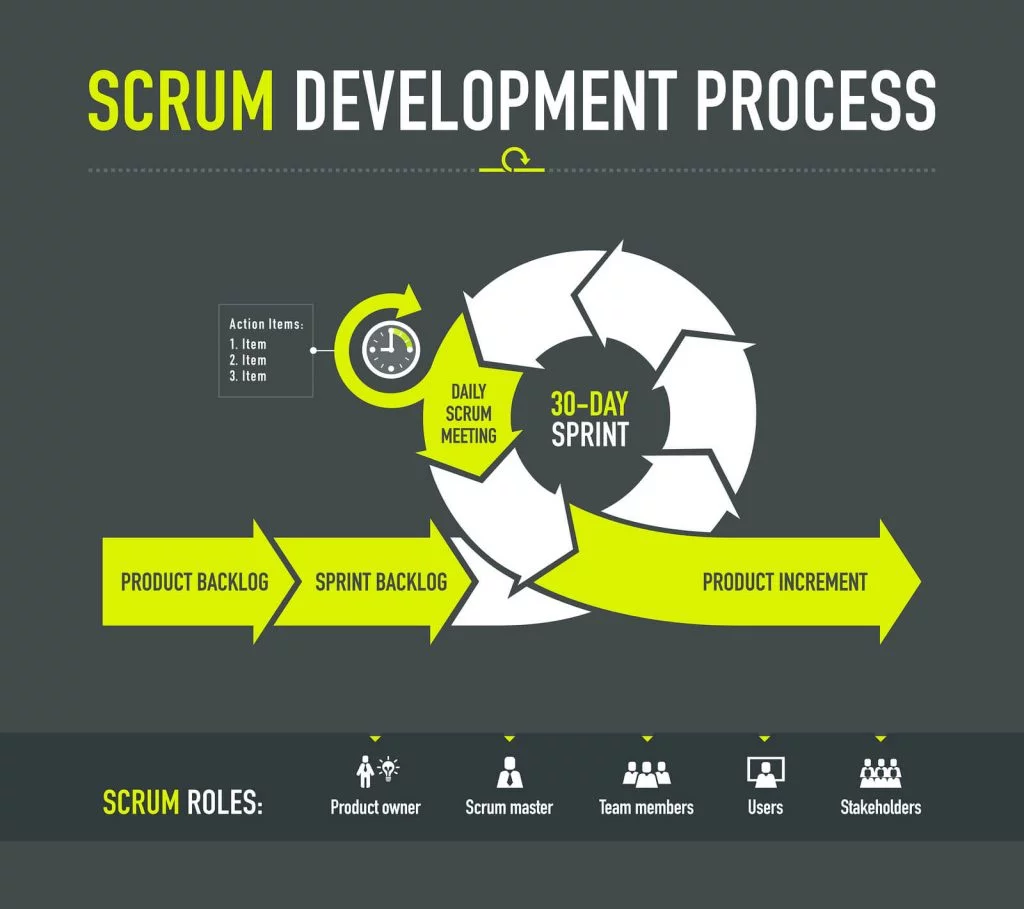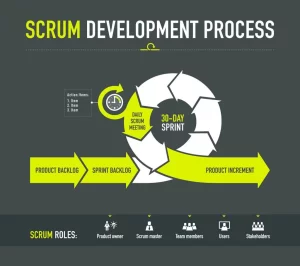Introduction: In the dynamic landscape of tech startups, efficient project management is the key to success. Scrum, an agile framework, has emerged as a popular methodology for fostering collaboration, adaptability, and rapid development. In this blog post, we’ll explore the history and benefits of Scrum and provide a comprehensive, step-by-step guide on how to implement it in your startup.
Understanding Scrum: A Brief History
Origins of Scrum:
Scrum was introduced in the early 1990s by Jeff Sutherland and Ken Schwaber as an iterative and incremental approach to software development. It draws inspiration from empirical process control theory and is rooted in principles of transparency, inspection, and adaptation.
Benefits of Scrum:
1. Flexibility and Adaptability:
Scrum enables teams to adapt quickly to changing requirements, allowing startups to respond swiftly to market shifts and user feedback.
2. Improved Collaboration:
With cross-functional teams and daily stand-up meetings, Scrum fosters better communication and collaboration among team members, breaking down silos and enhancing collective problem-solving.
3. Enhanced Product Quality:
Regular inspection and adaptation cycles, known as sprints, ensure continuous improvement and lead to higher-quality deliverables.
4. Increased Customer Satisfaction:
Scrum emphasizes customer collaboration, ensuring that the product aligns with user needs and expectations.
Implementing Scrum in Your Startup:
Step 1: Assemble Your Scrum Team
Form a cross-functional team, including developers, testers, designers, and other necessary roles. Designate a Scrum Master to facilitate the process and a Product Owner to represent the customer’s interests.
Step 2: Define the Product Backlog
Create a prioritized list of features, enhancements, and fixes called the Product Backlog. The Product Owner is responsible for maintaining and prioritizing this backlog.
Step 3: Sprint Planning
Select items from the Product Backlog for the upcoming sprint during the Sprint Planning meeting. Define the sprint goal and create a Sprint Backlog outlining the tasks to be completed.
Step 4: Daily Scrum
Hold a daily stand-up meeting for the Scrum Team to discuss progress, challenges, and plans for the day. This ensures everyone is on the same page and impediments are addressed promptly.
Step 5: Sprint Review
At the end of each sprint, conduct a Sprint Review to showcase the completed work to stakeholders and gather feedback.
Step 6: Sprint Retrospective
Reflect on the sprint’s successes and challenges in the Sprint Retrospective. Use this feedback to continuously improve processes.
Step 7: Rinse and Repeat
Repeat the process, continuously refining the product and adapting to changing requirements.
Real-world Examples:
1. Spotify:
Spotify successfully implemented Scrum, organizing their development teams into small, autonomous squads. This structure promotes innovation and agility.
2. Salesforce:
Salesforce adopted Scrum to enhance collaboration, streamline development, and improve their ability to deliver customer value rapidly.
Conclusion:
By embracing Scrum in your tech startup, you lay the foundation for a more adaptive, collaborative, and customer-focused development process. The step-by-step guide provided here, along with real-world examples, can serve as a roadmap for implementing Scrum and steering your startup towards success in the ever-evolving tech industry.














